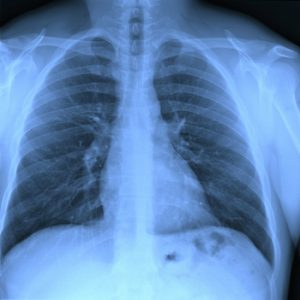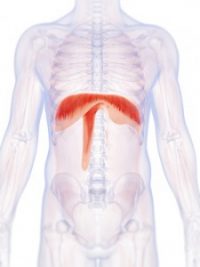
Understanding Diaphragm Paralysis and What Can Be Done
The diaphragm is a muscle crucial for breathing. When the diaphragm contracts, suction (negative pressure ventilation) is created that draws air into the lungs. Air is exhaled as the diaphragm relaxes, in combination with other muscles and tissues. When the diaphragm is not working properly, respiratory issues may occur. There is typically a degree of reduction in lung capacity, particularly noticeable when lying down (source: Cedars-Sinai).
If it is suspected that the diaphragm is not working correctly, there are a number of tests that may be performed. These include chest x-rays, blood tests, phrenic nerve conduction testing, MRI and ultrasound. A physician will be able to give specific information on the best test for your specific symptoms.
TREATMENT FOR DIAPHRAGM PARALYSIS
Treatment of diaphragm paralysis differs, depending on the severity of the condition. In most unilateral cases of diaphragm paralysis, no treatment is needed. In more severe cases, modalities such as diaphragmatic pacing or plication of the diaphragm may be used. In bilateral diaphragm paralysis or in patients with ventilator failure, continuous positive airway pressure or mechanical ventilation and tracheostomy are generally needed (information from National Institutes of Health).
For cases of diaphragm paralysis where breathing function is severely limited, many patients have two options: mechanical ventilation or diaphragm pacing.
In mechanical ventilation, often known as positive pressure ventilation (PPV), a machine called a ventilator is used to push air into the lungs. Though this may be a life-saving intervention, it may also cause problems such as ventilator-assisted pneumonia, collapsed lungs, and airway injuries. The diaphragm may also atrophy (become smaller or weaker), as it becomes a virtually unused muscle.
Diaphragm Pacing utilizes a surgically implanted phrenic nerve stimulator to deliver electrical impulses to the diaphragm, causing it to contract and expand. This creates a more natural breathing pattern. There are many advantages to diaphragm pacing over mechanical ventilation including both health and quality of life benefits. Advantages of diaphragm pacing are discussed in more detail in our articles discussing diaphragm pacing systems for tetraplegia and Diaphragm Pacing System advantages. You can also see Chuck’s story below, and how the Diaphragm Pacing System has helped him to live a normal life:
DIAPHRAGM PACING SYSTEMS
The Avery Diaphragm Pacing System is a Diaphragm Pacemaker manufactured by Avery Biomedical Devices, and is used for patients with diaphragm paralysis who would otherwise be completely or partially dependent on mechanical ventilation.
ABOUT THE AVERY DIAPHRAGM PACING SYSTEM SYSTEM
The Avery Diaphragm Pacing System System is the only diaphragm-pacing device with full pre-market approval from the USFDA and CE marking privileges under the European Active Implantable Medical Device Directive for adult and pediatric use. In addition, its system of using small implanted radiofrequency receivers may decrease a patient’s risk of infection and ongoing wound care management issues, compared to electrode wires that pass directly through the skin .
Avery has been commercially distributing diaphragm pacing systems since the early 1970s. Since then, more than 2,000 patients have been implanted in over 40 countries establishing an unsurpassed record of safety and reliability.
Content reviewed July, 2024 by Dr. Don Headley, M.D.
Dr. Headley is an otolaryngologist (ENT) with almost 40 years of experience in medicine. He is a graduate of George Washington University School of Medicine and Health Science, has been affiliated with St. Joseph’s Hospital and Medical Center in Phoenix, Arizona, and previously served as assistant professor of Internal Medicine and Surgery and Creighton University Medical School in Omaha, NE.



